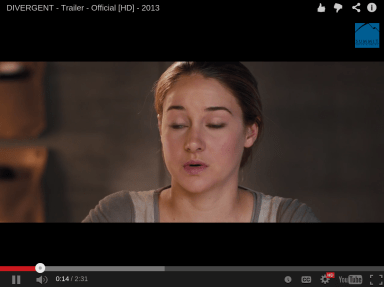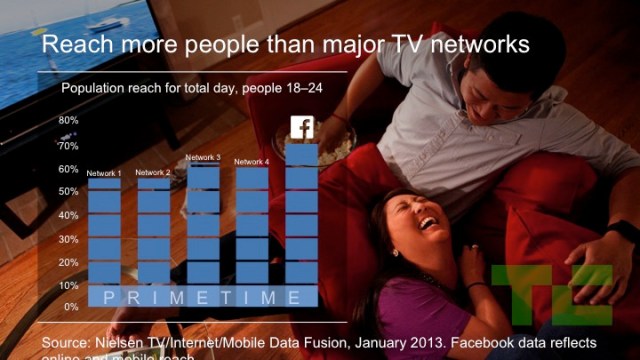
Facebook could have made it easy for advertisers to port their TV commercials or online pre-rolls into its new video ad unit. Instead, it’s spawned a fresh video ad format designed to minimize disruption to the user experience. While advertisers might be a bit annoyed they can’t reuse existing creative, Facebook’s decision could reduce backlash and preserve its audience. And it’s not the first time.
When Facebook originally introduced advertising, it didn’t offer the typical ad formats marketers were used to. They wanted flashing banners, home page takeovers, and standardized ad unit sizes so they could hawk their wares the same way they did elsewhere on the web.
Facebook said no.
The company knew that if it was going to grow to reach its full potential and become one of the most used parts of the Internet, advertising had to be subtle and it had to fit in. It mostly relegated ads to small boxes on its right hand column. There were some experiments and false starts from 2006 to 2009, but Facebook didn’t get serious about showing ads in the News Feed until January 2012 — almost six years after the feed launched. It didn’t show any ads on mobile until March 2012.
The strategy worked. Users were pestered by the ads, but not enough to quit the social network, and Facebook continued to grow into the 1.19 billion user juggernaut it is now. By keeping ads conservative and the user experience healthy, it may have disobeyed advertisers’ wishes, but it made sure they’d still have an audience today.
How To Autoplay Nice
This year, Facebook faced another tough decision about how handle advertising. With wired broadband and mobile networks improving, more users on smartphones, people shifting away from watching traditional television, and public investors to answer to, it looked for a way to launch a more aggressive unit for video advertising that could bring in the big bucks.
But how would the format work? A wrong decision that was too disruptive to the News Feed could scare Facebook users away in droves.
Marketers likely wanted to have it their way: autoplay ads with sound that forced users to pay attention.
Instead, reports say CEO Mark Zuckerberg and COO Sheryl Sandberg took a deep interest in how the video ad format would impact the user experience. They staffed the video ads team with people from Facebook’s consumer division, not its ad squad, and delayed the launch until the format was done right.
Today was saw that launch. Facebook’s new video ads autoplay as soon as they scroll into view. But in a unique twist that differentiates them from other formats, the audio doesn’t play unless the video is clicked or tapped. Above you can see an example of what Facebook’s first autoplay video ad for the film Divergent will look like in the feed.
The format strikes a balance between what users and what advertisers want.
A Compromise In Motion
What a lot of users want is no ads at all. Understandable, but good luck with that. Advertising pays for the free services we use. You can wave the AdBlock Plus flag but most people aren’t that savvy. To them, ads are either natural and ignorable enough to be admissible, or so annoying they signficantly deter usage of a product.
While everyone might not be happy (ie some people will surely go ballistic), Facebook’s new video ads could have been a lot more intrusive.
- They’re not pop-ups
- They’re not road-blocks
- They don’t yell at you unless you ask them to
- Don’t like ‘em? Just scroll by
- On mobile they cache while you’re connected to wifi even if they’ll be shown later to prevent ads from burining your data plan
Compare this to YouTube ads you’re forced to sit through for five or fifteen seconds, or the dozens of minutes of TV commercials you have to endure every hour, and Facebook’s format doesn’t look so bad.
We’ll still have to wait and see how things shake out. If you’re trying to read a text post or comments from a friend, and autoplay video nearby would be a distraction. And Facebook will have to make sure the ads are well targeted. I’d be bitter about seeing irrelevant ads for sappy romantic comedies or women’s clothes. But beyond the initial shock, I bet users will learn to accept this video ad format in their feeds. Maybe they won’t like it. But the format works great for displaying videos uploaded by friends, and most won’t hate the ads enough to leave Facebook.
Advertisers Need A New Autoplaybook
For advertisers, the format makes things a bit tricky. They’ll likely need to produce custom content for the Facebook video ads. Specifically, they’ll want videos that get the message across without sound. Rather than lots of dialog, they may want to focus on vivid visuals and bold text.
 You can see this strategy at work in the example video ad embedded above. The short clip promoting Divergent doesn’t rely on audio. It’s soundtracked with thrilling music, but the action sequences and flashes of white text on black get the action flick’s message across even when silent. Compare that to the dialog-heavy official trailer for Divergent seen right that wouldn’t make sense without sound, and you’ll get an idea of how advertisers will need to adapt.
You can see this strategy at work in the example video ad embedded above. The short clip promoting Divergent doesn’t rely on audio. It’s soundtracked with thrilling music, but the action sequences and flashes of white text on black get the action flick’s message across even when silent. Compare that to the dialog-heavy official trailer for Divergent seen right that wouldn’t make sense without sound, and you’ll get an idea of how advertisers will need to adapt.
Facebook did throw advertisers a bone, though. Once you finish watching a video ad, you’ll be shown a carousel of other video ads by the same marketer that could get you more deeply interested in the same product, or help you discover others.
eMarketer’s VP of communications Clark Fredericksen tells me some advertisers may blindly try to import their existing video creative, but expects that “You’re going to have other advertisers that are gong to try to optimize the creative so it works best regardless [of sound]. I definitely think advertisers will be experimenting with this. Facebook has such a huge number of users.”
That last point explains why advertisers may go the extra mile to develop special video content for Facebook. As I revealed in a leaked Facebook video ads pitch deck I attained last week, Facebook cites that it can reach more people age 18 to 24 during primetime than any TV network. That means if businesses invest in making commercials for TV, they should invest in making silent autoplay video ads for Facebook’s billion-plus audience. And I’d expect Facebook’s auto-play video ads to also fit Instagram, adding another 150 million users to the audience.
The extra effort might make it tough to constantly produce video ads, but Facebook’s confidential pitch deck reveals it’s focused on selling huge video ad “Blasts” that reach the majority of a demographic within three days. These will likely cost millions of dollars, and only be used when there’s something big and urgent to promote. The infrequency and cost of running the ads make customization appropriate.

Facebook will surely need to keep a death stare on how overall usage metrics are impacted as it determines how often to show these ads. No matter the quality of the format, if they’re displayed too often, users will be pissed.
But by developing a special video ad format that’s designed to fit the News Feed and respects users’ ears, Facebook may have found a way to evolve commercials for the 21st century.


ConversionConversion EmoticonEmoticon